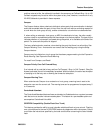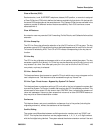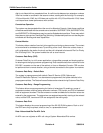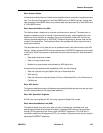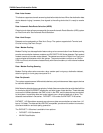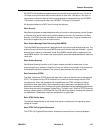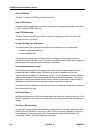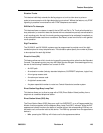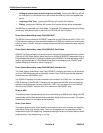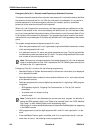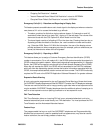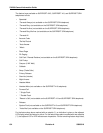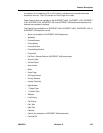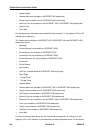
Feature Description
50003510 Revision A 149
Dictation Trunks
This feature indefinitely extends the dialing stage on a trunk to allow tone-to-pulse or
pulse-to-tone conversion of all digits dialed during a trunk call. Without the feature, only DTMF
signaling is possible from extensions with DTMF telephones connected.
DID/Dial-in/Tie Intercepts
This feature allows a customer to specify that all DID and Dial-in Tie Trunk calls directed to a
busy extension (or one which does not answer within a selected time period) are redirected to
a call rerouting point. As well, the trunks can be programmed to be redirected immediately or
to be redirected under certain error conditions. See Recall, to see how this fits in with general
recall operation.
Digit Translation
The SX-200 EL and SX-200 ML systems may be programmed to provide one of four digit
translation plans for rotary telephone sets. The translation plans specify the number of pulses
to be outpulsed for each digit dialed.
Direct-in Lines (DIL)
This feature allows non-dial-in trunks to ring specific answering points, rather than the Attendant
Console. The answering point may vary with Night Service changes. An answering point may
be one of the following in addition to a console or LDN:
•An ACD path
• An extension number (industry-standard telephone, SUPERSET telephone, logical line)
• A hunt group access code
• A modem pool access code
• A night bell access code
• A system speed dial number to route to a Central Attendant at another system.
Direct Station Page/Busy Lamp Field
This feature allows you to direct a page with a DSS (Direct Station Select) softkey from a
telephone to a selected telephone station.
Direct Station Select (DSS) Key
The Direct Station Select (DSS) Keys on a multi-line SUPERSET, or on a Programmable Key
Module functions together with the adjacent Busy Lamp Field (BLF) indicator. While the BLF
appearance indicator monitors the status of another device, the corresponding DSS key can
be used to call, and transfer calls to that device. The DSS key operates when the appearance
device is
• Idle - pressing the DSS key will initiate a call to the appearance device



